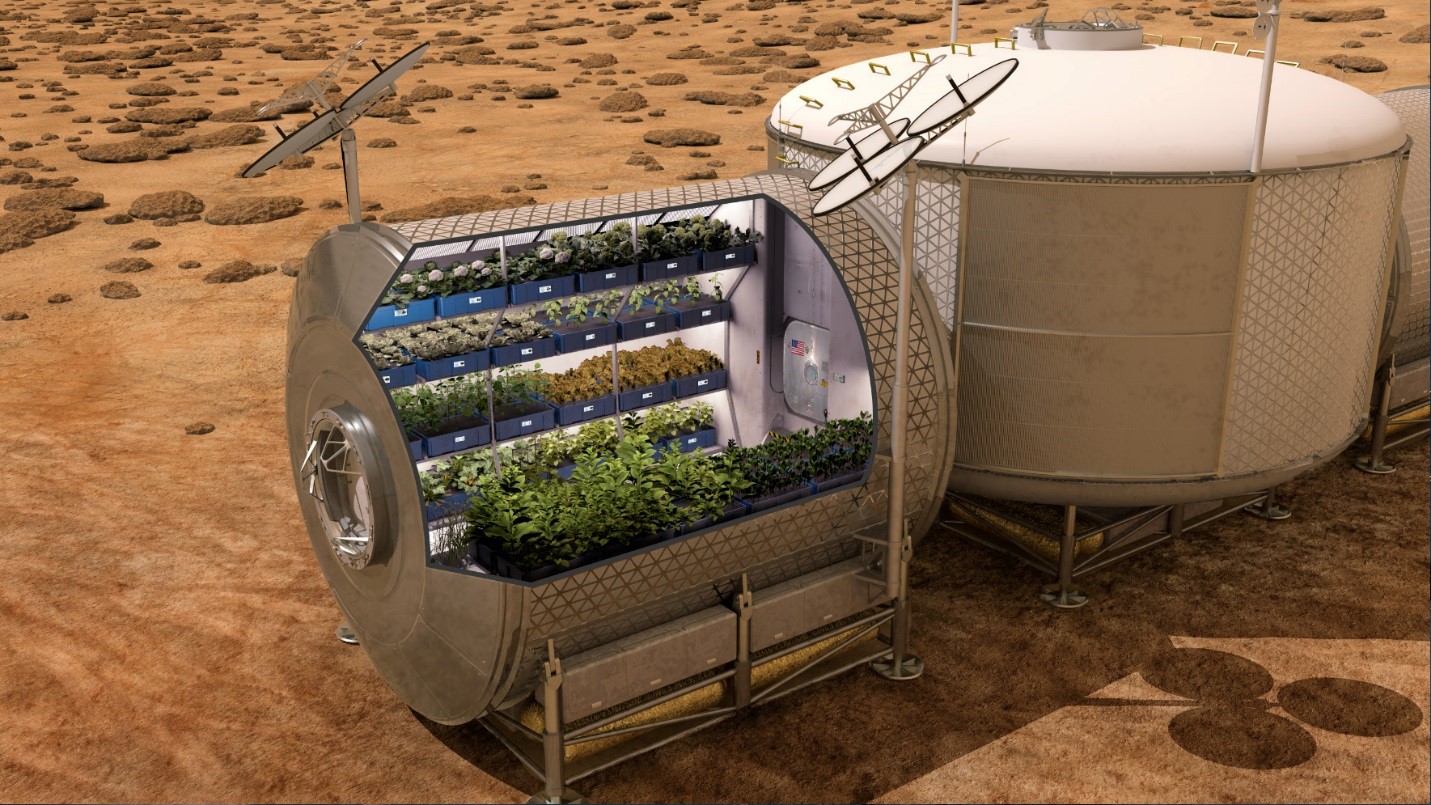
In 2017, Elon Musk laid out his grand sweeping plans for the future of SpaceX, the company that would take humanity to Mars. Over decades, tens of thousands of Starship flights would carry a million human beings to the surface of the Red Planet, the minimum Musk expects it’ll take to create a self-sustaining civilization.
The number of details in an effort like this is mind-boggling. What about the reduced gravity, radiation exposure, and space madness? What about return flights? Replacement parts? Building materials?
What’s everyone going to eat?
Of all the technologies we’ll need to master for anyone to live on Mars, let alone a million human beings, food might actually be one of the biggest challenges.
That’s because Mars brings almost nothing to the table when it comes to growing the vast amount of food that humans require. We don’t think there are any native plants and animals, and Earth can’t keep resupplying a Mars colony forever with care packages from home. That defeats the whole idea of self-sufficient.
Martians are going to need to produce their food locally. And that means harnessing everything at their disposal on the Red Planet, using the latest technology of food production to keep everyone fed.
But will they scale up to a million people?
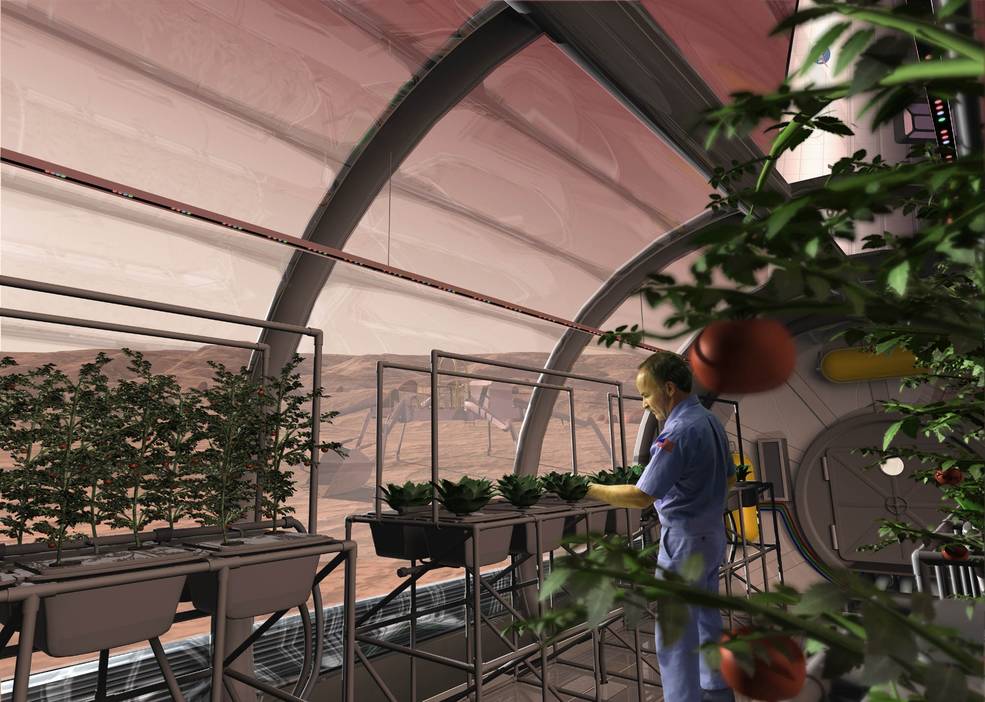
In a new paper published in the Journal New Space called “Feeding One Million People on Mars”, Kevin M Cannon and Daniel T. Britt provide an overview of the technologies that will need to be used for Martian food production, and what their limitations will be.
Obviously you can’t grow plants right on the surface of Mars, the freezing cold and low atmospheric pressure would wipe out a plant before it could even sprout from a seed. There’s no usable organic material in the Martian regolith, and the top layer even contains toxic perchlorates.
The traditional idea is that Martian gardeners will grow their crops in giant greenhouses, starting plants in the regolith with added organic material. You’ve seen the Martian, you know what I’m describing.
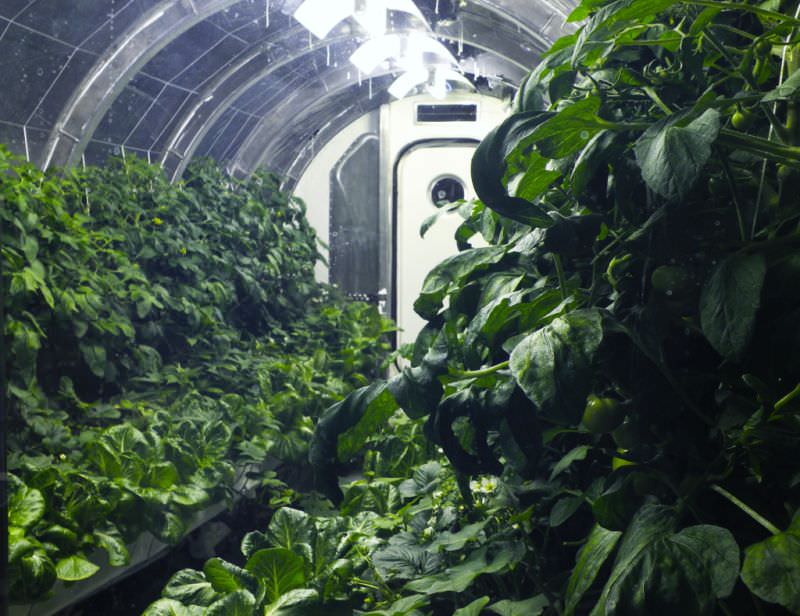
And it should be relatively straightforward to wash the regolith to remove the perchlorates.
But according to Cannon and Britt, this probably won’t be the case in the beginning. Martian plants won’t touch the regolith. Instead, they’ll be grown hydroponically in nutrient-rich solutions using supplies brought from Earth.
Let me show you a specific example of what this might look like.
One of the most hostile places on Earth to human life is Antartica, but in 2018, scientists at Germany’s Neumayer Station II in Antarctica harvested a huge crop of vegetables that were grown completely hydroponically.
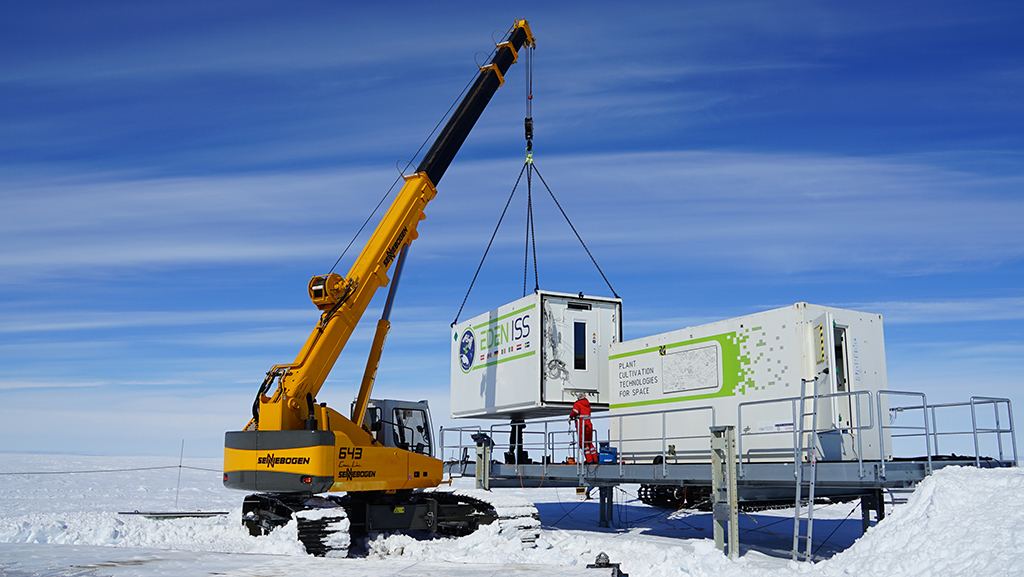
They were grown in the EDEN ISS greenhouse, which is a completely self-contained growing environment with LED grow lights, hydroponic nutrients, and atmospheric control.
Over the course of 9.5 months, they were able to produce 268 kilograms of food using only 12.5 square meters of space. They were able to grow cucumbers, lettuce, and tomatoes that taste as good as what you might grow in your own garden.
One person needed an average of 3-4 hours a day of effort to grow the plants.
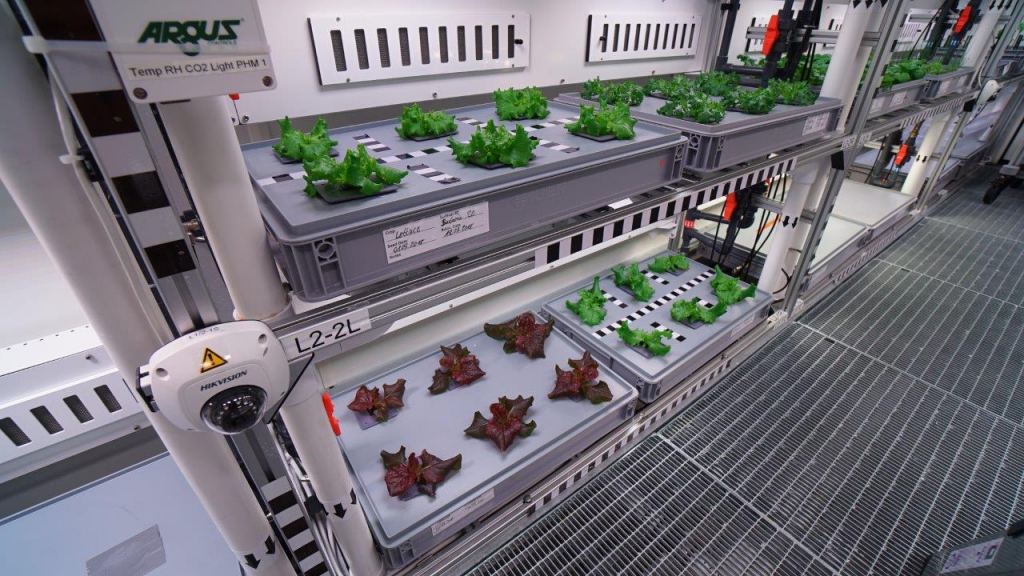
There’s no reason to think this technique wouldn’t work on Mars, although managing the atmosphere would be more challenging since you can’t just open up a window when it gets a little too humid in your greenhouse.
Worried about the low gravity? We already know that it’s possible to grow plants in space. There’s an experiment onboard the International Space Station called the Veggie Plant Growth System, which was installed in May 2016.
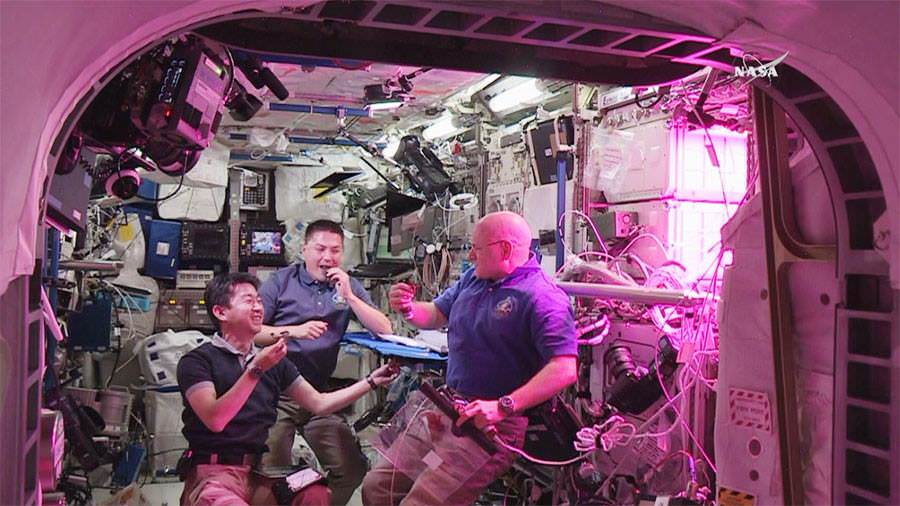
This small greenhouse contains three different types of lettuce, grown in a hydroponic medium with LED grow lights. Astronauts regularly harvest the lettuce and make salads using dressing sent up from Earth.
A scaled-up version is called the Advanced Plant Habitat, which is a growing chamber the size of a mini-fridge. It’s designed to test how different plants respond to microgravity and is almost entirely autonomous, regulating temperature, nutrients, and water.
Recently the system was used to grow dwarf wheat in microgravity, and it looked pretty normal.
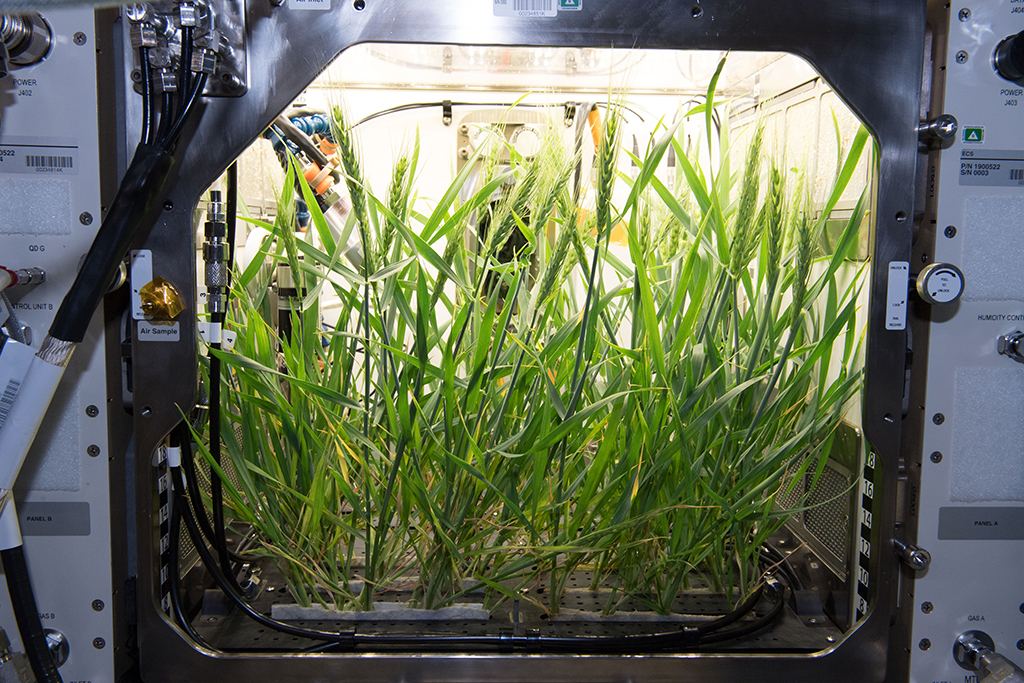
Which plants should you grow when you can start farming in the Martian regolith? Edward Guinan, a professor at Villanova recently carried out an experiment with his undergraduate astrobiology class called The Red Thumbs: Mars Garden Project.
They tested out how well different plants would grow in simulated Martian regolith, and most importantly, how do they taste? It turns out barley, basil, kale, hops, onions, garlic, lettuce, sweet potatoes, and mint did well.
Let me reiterate so it’s clear; hops and barley grown on Mars, taste just as good as when they’re grown on Earth. I’ll have a Martian beer.
Okay, so what else is on the menu for Mars?
According to the paper I referenced earlier, Cannon and Britt suggest that we’d get our protein from plants, as well as, uh, crickets. They’re packed with protein but easier to farm than a herd of cattle, and there are plenty of companies here on Earth that would be glad to sell you crickets in almost any edible form you can imagine.
There are also some incredible advances in cultured meat, with bioreactors producing beef burgers and chicken that’s never been on an animal.
Cannon and Britt built a model to simulate the food needs of a population on Mars growing to a million people over the course of 100 Earth years. They assumed the colonists would arrive 150 at a time on rockets from Earth, and factored in natural birth and death rates. They also assumed that there would be healthy births on Mars and a natural rise to the local population.
They calculated that it would take almost 200,000 supply ships if no food was grown on Mars to keep the inhabitants fed. But if they could get their local food operation rolling, that number would drop down to just over 50,000 supply ships over the entire 100 years.

They could reach self-sufficiency within 40 years if more labor was set aside for farming, with cargo ships carrying more farming supplies. This means less food, and more hydroponics gear and grow lights, but over time the a… Click link below for complete article

